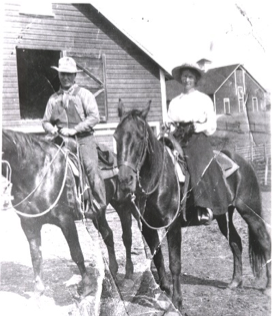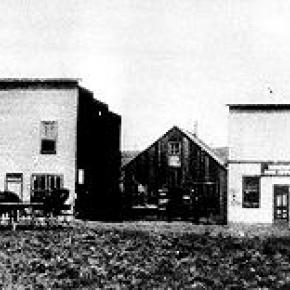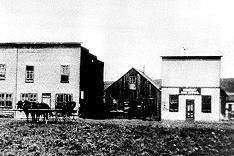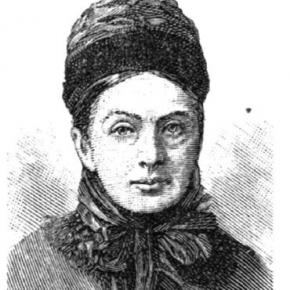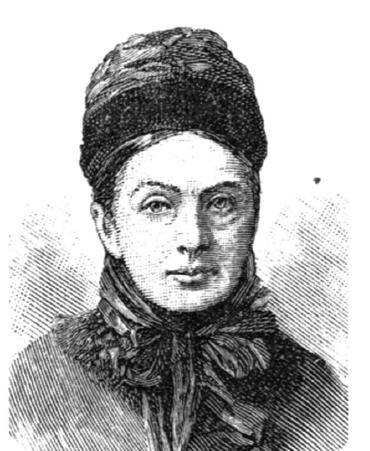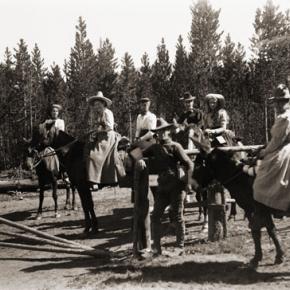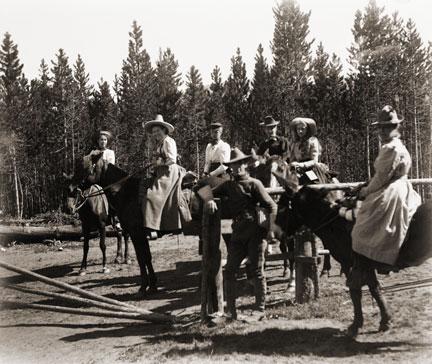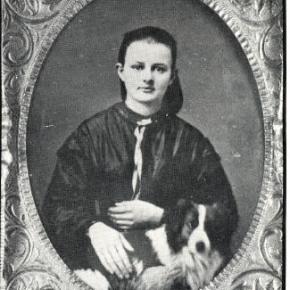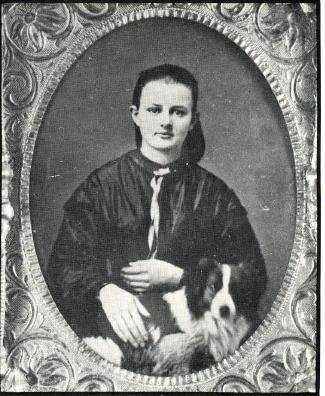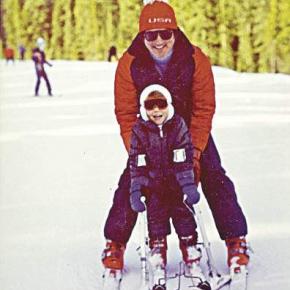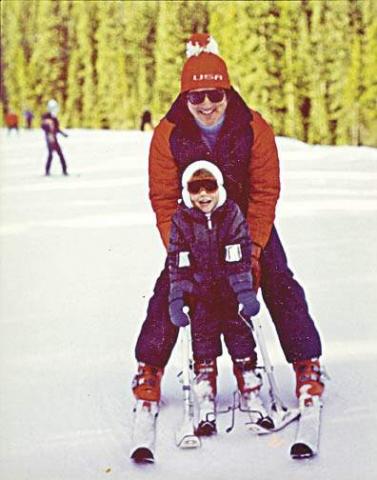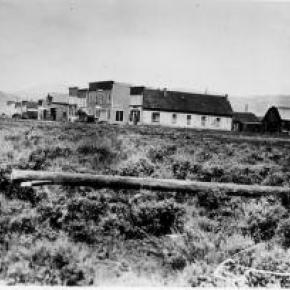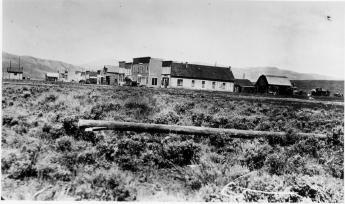Stories and Poems of Past Memories
.
Stories and Poems of Past Memories Articles
| 2006-100 Year is Here |
2006-100 Year is Here
Poem, contributed by Vera Shay, August 2006 Since the railroad tracks Were all laid down Trains coming into Kremmling town Only books, left to tell and say Of the excitement that day Of the thirties and the forties It is so Of the railroad tracks and trains I do know I rode on them everywhere Here and there During those years in my mind I owned them all you see That I would have told you Had you asked me. Todays trains all have a brand new look Inside and out Riding on the trains from them till now There is no doubt The train crew and passengers of today Still just as fun and great Though they seem to always be running late Lots of folks think they're just too slow For me they've always been A wonderful way to go Trains, trains Let there always be trains
|
| 4th of July Parades in Granby |
4th of July Parades in Granby
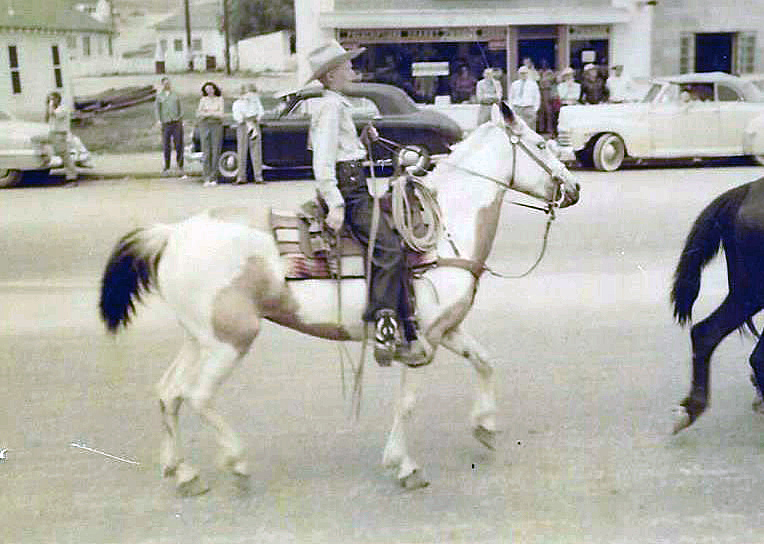 , , 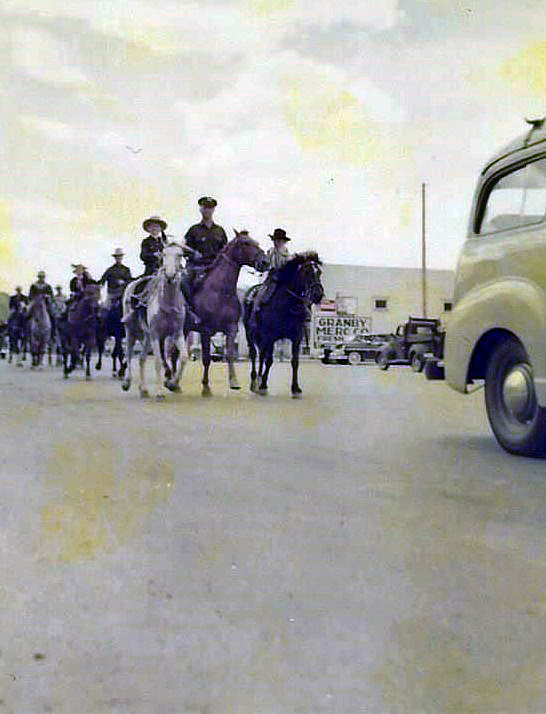 , , 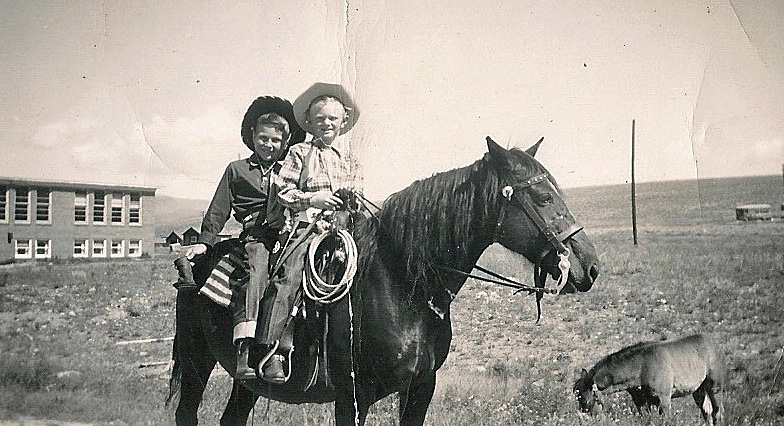
In 1947 my family moved to Granby, Colorado; I was 5 years old. My Mom (Eloise) and Dad (Howard, “RED”) Beakey, ran the Texaco gas station where the Chamber of Commerce parking lot now sits. I have a sister named Sandra Sue, who was 3 at the time. In 1948 Mom and Dad bought me a mare named Midge, and that is the beginning of my joy of growing up in Granby. I rode Midge all over Granby and surrounding area. In the winter I would pull kids on their sleds and skis with a rope tied to the saddle horn. In the spring of 1949 Midge produced a filly foal that we named “Lady Blaze.” The following 4th of July Rodeo Parade, 1949, I rode on Midge and my friend, Howard Ferguson, rode behind me and led Lady Blaze in the parade. A local farrier had made lace up booties with metal bottoms for Lady Blaze so she wouldn’t damage her hooves while being led in the parade. You can imagine the sound of those booties hitting the pavement as we rode down Agate Ave., and the enjoyment of the crowd lining the parade route. At that time the rodeo grounds were in the area of N Ranch Road. The Granby Fire Department awarded me with a $3.00 check for being “The Most Typical Cowboy Under 12.” I was totally amazed and still, at the age of 79, have that check! I did give Howard $1.50 in cash, though, that day for his part. The following year, 1950, Mom and Dad bought a Pinto filly from Tex Hill, the Foreman of the Little HO Ranch east of Granby. Tex rode the Pinto into the gas station office one day and asked my Dad if she was gentle enough for me. Dad said yes, and I became the proud owner of my second horse, which I named Melody. That year (1950) my sister, Sandra, rode Midge and my Dad rode his hunting horse, Spike, and I rode Melody in the Rodeo Parade. Prior to the rodeo Dad (who hadn’t ridden Spike in a long time) got bucked off into a pile of rocks and got pretty banged up. Sis rode up and asked Dad (who was laying on the rocks) “are you dead Daddy”? Sis and I rode all over Grand County, riding along US 40 to 10 Mile Creek to fish the beaver ponds; we would be stopped several times to have our photos taken by the tourists. Tourists always seemed amazed to see little kids riding on horseback way out in the country. We always brought home from our outings some nice Brookie trout. Sometimes we would ride out to The Little HO Ranch and spend a few days there with playing real live cowboys with Tex, while Sis would help his wife around the house. In 1951 Tex Hill brought a full sister to Melody, named Patches, for Sis to ride in the parade, so, we rode side by side. That same year Eddie Linke Jr. asked me to ride his racehorse in the rodeo race. We went to the rodeo grounds several days for me to get used to the horse. Of course, the horse was not as gentle as Melody, so I fell off several times before getting use to him. The best part is that I did win the race, and was happy and proud riding Eddie’s horse. In 1952 I once again rode Melody in the Rodeo Parade, which was sad for me as it was the last one, I attended before we moved away from Granby to Arvada. Mom and Dad sold both the horses. I guarantee several tears flowed because of that. One of the other great things I enjoyed was going to a cow camp in the summer. A friend of my parents, Rocky Garber took me to cow camp that was behind Trails End Ranch on Willow Creek Pass. We packed our supplies in on pack horses to a small log cabin. I was so excited to be a cowboy, moving cattle from one grazing spot to another, even getting covered with mud pulling a heifer out of a mud bog. The second time I went to cow camp was with my Dad’s cousin Louis “Newt” Culver, who in my mind was the greatest cowboy ever. The cow camp was below “Devils Thumb” east of Tabernash. It was a log cabin next to a creek and had corrals to keep horses. Once again, I loved the excitement of being a cowboy. We would go to the high meadows checking on the cattle and occasionally have to chase an ornery bull back to the herd. In the evenings Newt would train horses to be good cow ponies. When they were gentle enough, he would let me ride one while he rode another that he was training. So, some of my greatest memories of my life are the years I spent in Granby and Grand County, not a better place for a kid to grow up! I graduated from Salida High School in 1961 and our family moved back to Granby. Mom and Dad had the Texaco Station in Fraser. I joined the Air Force in 1962 and retired after serving 26 Years. By Joe Beakey - Poncha Springs April 2022 |
| A Story from Big Horn Park |
A Story from Big Horn Park
And Then There Was Light They were perched on the side of the road in Big Horn Park peering out the window at twilight as their eyes moved across the Troublesome Valley below and then up to the high mountains of the Gore Range. From this distance it was obvious why early settlers, having trouble forging the creek, had appropriately chosen that name for the valley. Paul pointed out the window to the right and said, "That is where my great-grandparents lived." His ancestors had first homesteaded in Wray, Colorado before moving to Grand County around the year nineteen hundred and eighteen to ranch up on the Gore Range. They headed down the gravel road to the ten acres of land just purchased not far from his grandparent's property. "Legend has it," Paul continued, "that on a bright, summer morning, Henry rode up to the timberline above his cabin to cut down the last load of trees needed to build a barn. "Clara, his wife, called after him, ?I will bring your lunch when the sun is high in the sky.' "Early in the morning", Paul explained, "she cleaned the tiny cabin and prepared food by the light of a kerosene lamp. When the sun was almost straight above the cabin, she dressed and left by horseback with lunch for her husband. When Clara reached the top of the ridge, she could see Henry preparing to fell the last tree. Excitedly she headed up a final hill and dismounted with the lunch in her right hand. Climbing quickly, Clara called to Henry distracting him from his chore. "Then suddenly from high atop the ridge above him," Paul added, "Henry heard the terrifying cry of a lone, grey wolf. The scream was shrill to his ears, and his heart stopped beating for a moment before he looked around to see that the tree had crashed instantly to the ground. All was silent on the mountain as he descended to find Clara dead beneath the branches of the tree with the lunch still in her right hand. It had happened so quickly that Henry never heard one sound escape from Clara's mouth. And even today as the morning sunlight outlines the evergreen trees on Elk Mountain, you can see the silhouette of a woman's face with her hair flying wild and free in the wind and her mouth open wide, crying out for help. "They called him O'Grey", he added, "but they never saw or heard from that wolf again." Life in Big Horn Park in the nineteen-eighties when they bought the land was still challenging; no electricity or running water was available to provide creature comforts to local inhabitants. Over the years, while a house was being built, they washed in a small stream of water that trickled down across the property from Monument Creek. Neighbors used kerosene lanterns to illuminate the night and gasoline generators to pump water from wells. Bears often tried to enter basements for food, and mountain lions crawled onto decks to devour small dogs or cats. Only one or two hardy families lived in Big Horn Park in those days through the long winters. Skis provided a way of escape in the event of a winter blizzard that often dumped snow deep enough to cover the tops of the three-wire fences. And then there was light. Paul flicked on a switch in the house and radiance encircled them, startling the cats and engulfing the room. That marked the beginning and the end of time; old ways faded and new, exciting possibilities emerged. It was almost Christmas of the year two thousand and two, and the first holiday up in Big Horn Park was beckoning. If not for the electric heat installed during the summer, the trip would have had to be postponed for another year. Only by chance can the mournful howl of a lone, grey wolf be heard today, but the cat cries of the fox emerging from a den can still awaken a soul at midnight in the summer or the yipping coyotes can be heard as they call to one another in the silent, winter night. And the tracks of a lonely, mountain lion lopping across the hillside beside the cabin can occasionally be found in the snow. The experience quickens the heart and revives the spirit as the Jeep is loaded with suitcases and cats, and a turkey with all the trimmings. From Utah across the high, barren desert and up the winding Trough Road the old Jeep transports the family to fulfill the dreams of a lifetime. A slender sled is removed from the Jeep as the attached silver bells jingle. Supporting their bodies against the door, the man and woman grab their snowshoes to slip them on and tie the leather straps securely. Cats and turkey dinner are hauled through the pristine snow like times of old to the garage door. A blast of bitter cold air escapes from the house when the door is opened, chilling the bones, but the electric heat will melt away the cold air while they climb the low hill to inspect tracks left in the snow by tiny creatures. Soon flickering lights from a fresh, Christmas tree on the second floor loft cast playful shadows across the living room below. In a small room above, two single beds snuggled against the outer walls are spread with warm comforters. All manner of toys, games, and bright objects decorate the room, awaiting a grandson's arrival. For the adults, the smell of the turkey and the taste of pumpkin pie revive childhood dreams of holiday celebrations of long ago. Laughter and pleasure emerges from the snug cabin and records are played on the old turntable chanting, "Silver bells, silver bells, soon it will be Christmas day". Thus begins a new life for them; not only can the family survive "up on the Troublesome" again like their ancestors from the shadowy past, but a livelihood can be earned. As summer arrives a light will flash, a screen will brighten, and online learning will occur as distance education courses will be provided to students in Maine and other states from a small cabin located over eight thousand feet above sea level in a remote, northern corner of Colorado. |
| A Walk's Excitement - Anniversary of September 1945 |
A Walk's Excitement - Anniversary of September 1945
Contributed by Vera "Stathos" Shay, Kremmling Granby resident 1930-1945 I walk, walk here there and everywhere; I walk alone down the hill I see our beautiful red, white and blue High on poles waving, waving proudly over town. No, what is this! Daddy's with me. He said to me wait, wait I'm going with you. This must be important. Daddy never joins crowds and there is a big crowd. It seems the whole town is gathering. Everyone is so happy and excited Some people are waving American flags. There is music, cheering, singing and dancing. Daddy has brought along with us one of his track railroad flares. He is lighting it. He before has only lit one of them for our family to celebrate on Fourth of July. What is going on? Now everything is quiet. Then someone is shouting. Japan has surrendered. Japan has surrendered. Now I know. Hurray! Hurry! The war is over.
|
| Christmas at Fraser |
Christmas at Fraser

The lights dimmed; mothers had already found their seats after coming from the classrooms where they had put makeup on little children’s faces and checked their costumes to make sure angel wings and halos were secure and costumes were on right side round. I was at the piano, music and script lined out. The gym was full to the brim, every seat taken, with folks lining the sides and back walls, for the whole town had turned out. Early birds got the seats! Christmas wasn’t Christmas in the Fraser Valley unless it included the program at Fraser School (now the Town Hall). I began the overture and chatter stopped. I had played for this event for ages, starting in 1958. High school students were gone by then, moved to the new Union High School in Granby, but 7th and 8th graders were still there. And in 1958, the first kindergartens in the district were established. It was a time of excitement and anticipation, of fun, and of panic? Well, no, not panic, for the teachers were beautifully organized. The program was chosen during October. Each teacher had a specific job. For instance, Martha Vernon, the art teacher, did sets. Helen Hurtgen was responsible for dialog. Edith Hill did costumes. Nancy Bowlby was in charge of the music. Others coordinated the whole. And I played the piano, with Nancy sometimes accompanying me on her violin. Mothers were asked to contribute sheets and any fabric they could spare. Patterns and material for costumes went home to be sewn into various sizes and shapes -- angels, gingerbread men, knights or royalty. In the gym, we stitched on finishing touches, bright patches to decorate jester outfits, townspeople, and such, while watching various groups practice. Bits of tinsel became crowns, tinfoil turned into wands, cheesecloth into wings. Lace scraps and sequins added color and “class.” The budget was extremely minimal at first, but over the years, more money was directed to Christmas programs. Instead of old sheets, we could buy cotton fabrics, velveteens, sometimes satin. One year I even stopped by a furrier’s in Denver and begged some fur scraps. Were we uptown then! We had fur trim around the necks, cuffs, and hems of the costumes for the prince, queen, and king. The day before the play, PTA mothers gathered in the gym to fill brown paper sacks with an apple, orange, nuts, and candies, provided by R. L. Cogdell from his grocery store. Every single child in school took part in the play, as a class, except for those with speaking parts, of course. Fraser grew and grew, then as now. Soon the 7th and 8th grades moved to Granby. Then the 6th graders went, but the 4th and 5th graders handled the leads neatly. Our stories were usually simple Christmas tales, but sometimes we tackled ambitious efforts such as the Nutcracker Suite or a version of Gilbert and Sullivan. The only children not included were the Jehovah Witness youngsters. They couldn’t be in the play and they couldn’t come watch it either. We all felt very sorry for them, because everyone had such a wonderful time. Their teachers tried to give them special projects to entertain and interest them while they sat off in a corner or in their classrooms. The plays always went well. Tiny kindergartners came out onto the stage, to stand behind the colored lights. They knew their song perfectly in practices, but I have to admit that a number of them usually stood silent, stunned by that mass of faces looking up at them. No matter. They were darling. “Hi, Mom,” some were sure to call. “Mom” beamed. |
| Christmas in the Mountains 1951 |
Christmas in the Mountains 1951
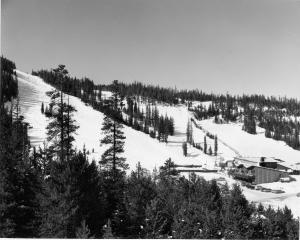
It was my first Christmas in the mountains. Not only that, but it was my first time to be part of a vacation in a cozy ski inn. This was at Millers Idlewild Inn in Hideaway Park (now the town of Winter Park). I had been married only eight months. Dwight and I had worked hard, getting everything in order: clean beds, fresh spreads and curtains, floors shining and bathrooms sparkling. The woodpile was full and food supplies ready. Our plans for evenings were laid out too. Dwight would do movies. His brother Woodie would call square dances, with former Moffat Road engineer George Shryer accompanying on the fiddle and his wife, Grace, chording on the piano. Tom Smith would bring his sled and team of horses, to take happy folks along snow-packed roads for sleigh rides, to the tune of jingling bells. Games were at hand, along with a fine supply of books on the shelves. We expected a wonderfully busy two weeks, which was a good thing, because it had been a long time since our last income, before Labor Day. |
| Colorado Mountain Wild Flowers |
Colorado Mountain Wild Flowers

A sight to behold A sight that will forever last Scattered among the trees Tiny little heads Oct 2006 |
| Granby Then and Now |
Granby Then and Now
Contributed by Vera "Stathos" Shay, Kremmling I've just read " What a great history My little town, of way long ago A tiny bit of that time Was a part of mine With me forever Forget you never I've kept up I've kept in tact This little girl that Lived across the track That railroader's little brat I'm proud and happy to say Was my home, in my childhood day.
|
| Ida Laverne |
Ida Laverne
"Ida Laverne: My Baby Sister" contributed by Vera Shay One Grand Essay Contest, 2005 I didn't remember it at all I was pretty small It was the sixth of November this I do remember Daddy went a-far traveling on his railroad motor-car all the way to Fraser and in good measure Dr. Susie he brought back riding down the railroad track I think with them, that maybe they brought us our baby And that was you Ida LaVerne now it's my turn to say Happy Birthday
|
| John the Cat Man |
John the Cat Man
Old John, the Cat Man, lived just below the red brick railroad station at Winter Park, in a small log cabin, perhaps 10’ x 12’. He was Swedish, or maybe Norwegian. His last name might have been Peterson or Pederson, Swenson or Svenson or Swanson, Larson, Olson, Wilson, or Erickson; all that is lost to history. John surely came into the country first, to work on the Moffat Tunnel. Now, two decades later after the opening of the tunnel, he was mostly retired. However, he was the official deliverer of the U.S. Mail to the Winter Park Post Office. This was in the years between 1945 and 1949 or 1950. |
- 1 of 2
- next ›









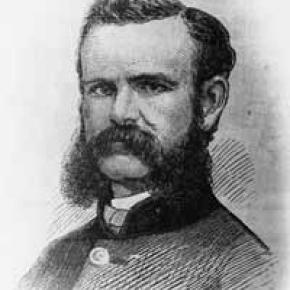
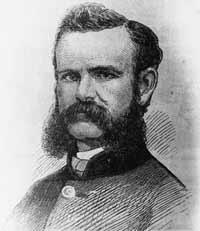
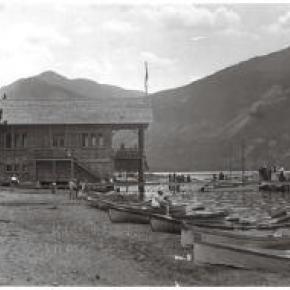
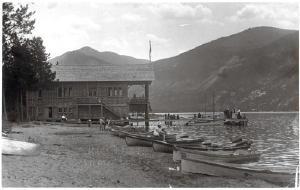
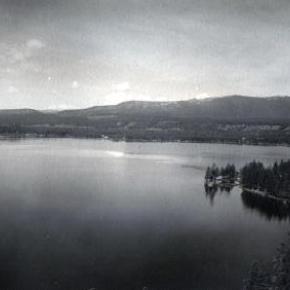
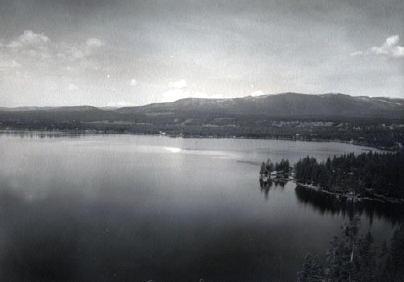
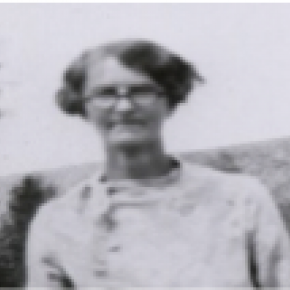
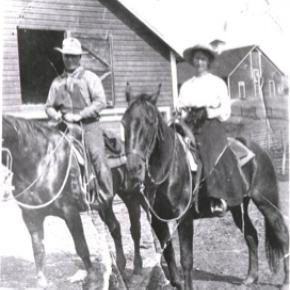
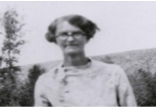 ,
, 